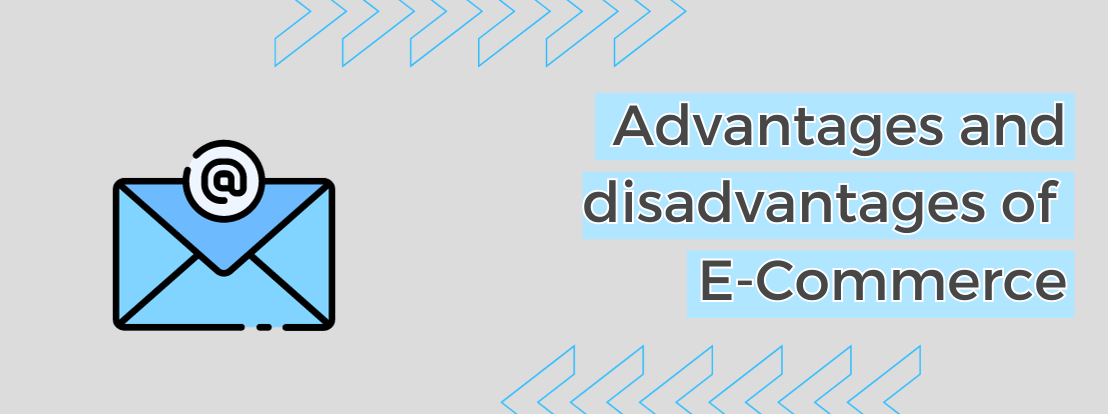Table of contents
Evolution of e-commerce
E-commerce is a term used to describe the buying and selling of goods and services through the use of electronic devices or computer networks.
The evolution of e-commerce has been changing at a rapid pace. The growth in popularity of online shopping, mobile commerce, e-commerce applications and social networks has led to the development of new trends in e-commerce.

In this article, I want to tell you about the advantages and disadvantages of e-commerce. You need to know both the good and the bad if you are going to start or are already into this world.
What are the Advantages and Disadvantages of E-Commerce?
E-commerce is a digital transaction and the process of buying and selling goods or services through electronic means. The advantages of e-commerce are mainly that it is cheaper, easier, faster and more convenient. The disadvantages are that it can be impersonal, have less control over the product and create privacy issues.
However, let’s take a deeper look at why e-commerce is good for you and what are the downsides to consider:
Advantages
-
- It can be done at any time and in any place
Keep in mind that being online, e-commerce is open 24 hours a day, 7 days a week, that is to say, you will always have online stores open. Moreover, no matter where you are, as long as you have an internet connection (and money), you will be able to make a transaction.

-
- Some types of products are more accessible with e-commerce than with traditional retail stores
E-commerce has had an impact on almost every industry with the ability to sell products remotely. But it wasn’t until recently that e-commerce began to affect the way consumers buy products. There are a number of new and exciting companies that have incorporated this trend to bring more accessibility and convenience to their customers.
Therefore, thanks to the evolution of ecommerce, companies are adapting and making it easier to purchase some products via online.
-
- E-commerce can be used to increase brand awareness and customer loyalty
Ecommerce is no longer just a trend, it has become an essential part of the modern business world. By harnessing the power of e-commerce sites to generate brand awareness and customer loyalty, companies can increase their market share and revenue.
In conclusion, e-commerce has a variety of advantages over traditional commerce. It is more convenient for customers and saves time. In addition, it also reduces the risks involved in physical transactions by eliminating human error and fraud.
Disadvantages
-
- It is difficult to track inventory or sales for companies using e-commerce platforms
E-commerce platforms provide the tools and resources necessary for businesses to grow. However, these platforms are difficult for a business to track inventory or sales.
-
- They do not allow users to make a purchase without logging in to their account
This means they will be prompted to enter credit card information every time they want to make a purchase on the platform. This can be problematic when the user has forgotten their password and cannot log back in due to this issue.

-
- Product access
When we buy online, we have to rely on other people’s opinions and comments. If the product does not look good, it is difficult for us to decide whether to buy it or not. No wonder many customers think that seeing the product before buying it is essential.
-
- Technical failures
If the ecommerce where you are going to make the transaction has a technical failure, that website will lose customers, sales and visits, since it will not be accessible. Make sure that the hosting systems are up to date and use the latest security protocols.
In summary, e-commerce is convenient for consumers, but it can also be detrimental to businesses. Consumers spend more time on their phones than in stores, which means that physical stores may not be able to compete with e-commerce vendors. Depending on how you view this aspect, you’ll assess whether it’s a disadvantage.
it looks like a golden opportunity to me!
Overcoming the challenges associated with e-commerce
The challenges associated with e-commerce are numerous. There are many factors that can contribute to the success of an e-commerce business, but there are also some key things to keep in mind when starting out.
E-commerce is a booming industry. But with rapid growth comes many challenges. In addition to improving the overall customer experience, you must also work to improve your own business processes.
If you’re thinking about creating an online store or already have one but want to get the full potential it deserves, contact us!
Innovadeluxe is an agency of PrestaShop experts with more than 10 years of experience that will help you solve all the challenges that come with having an e-commerce.
The future of e-commerce
The future of e-commerce is bright. E-commerce is expected to grow by about 10% in the next five years.
The key trends for e-commerce are expected to be mobile, personalized and social commerce.
Mobile commerce is a trend that has been on the rise for quite some time. A recent study showed that people spend more time shopping on their phones than in a store. With digitization and the rise of social media, it makes sense that people are spending more time on their phones than ever before. This trend is likely to continue as we move forward.
I hope you liked this article on the pros and cons of e-commerce – do you see more benefits or drawbacks? We’ll read you!




Deja un comentario